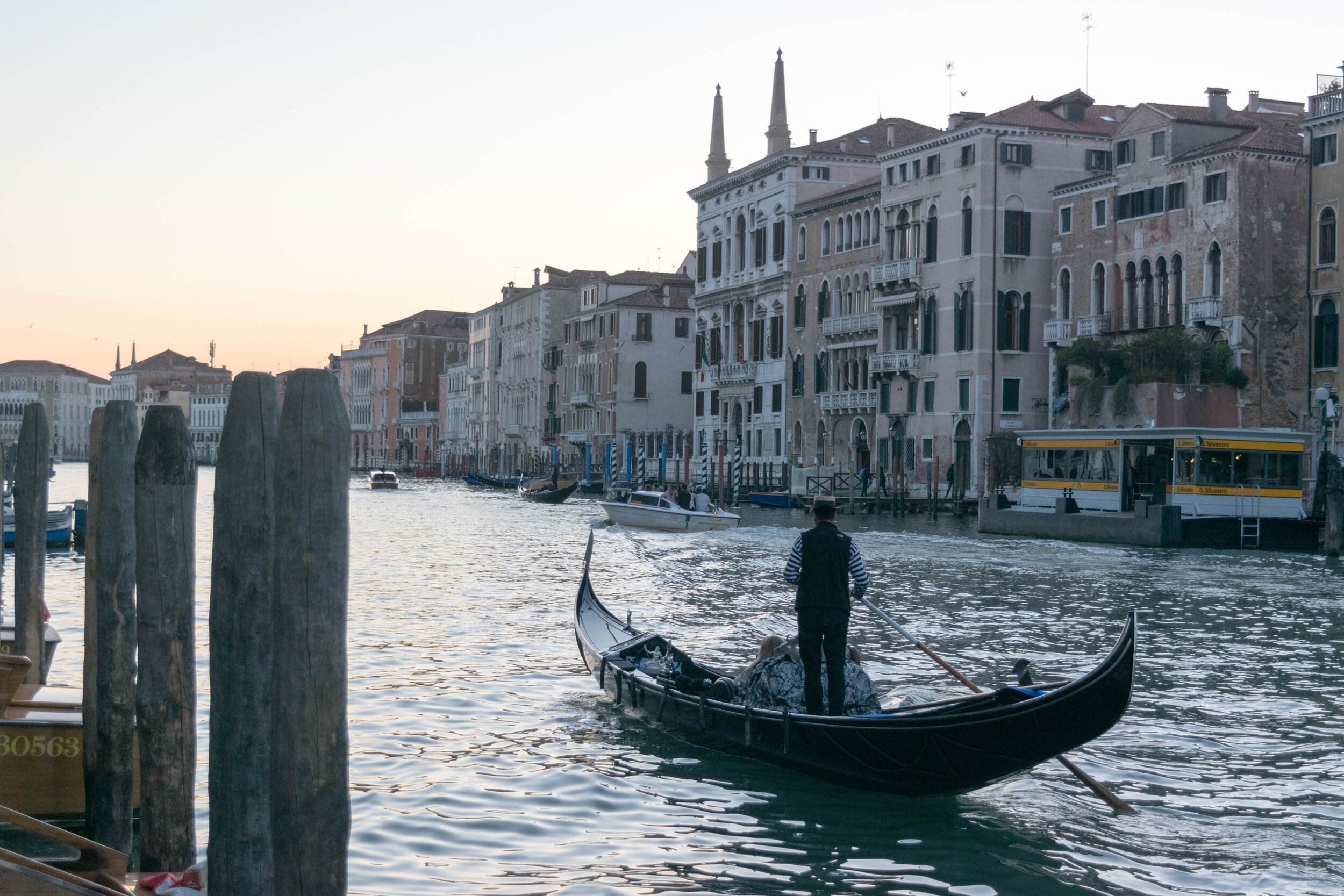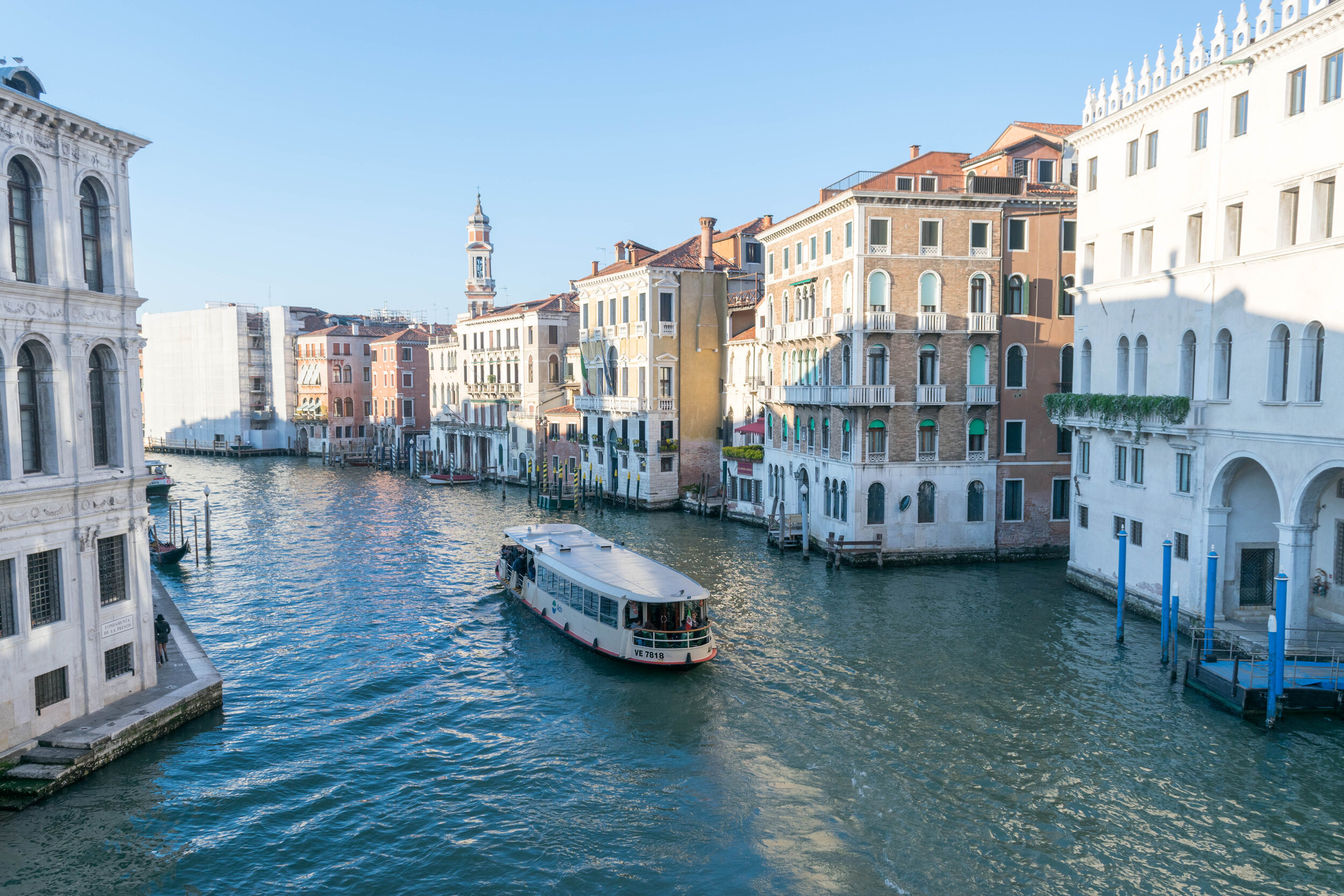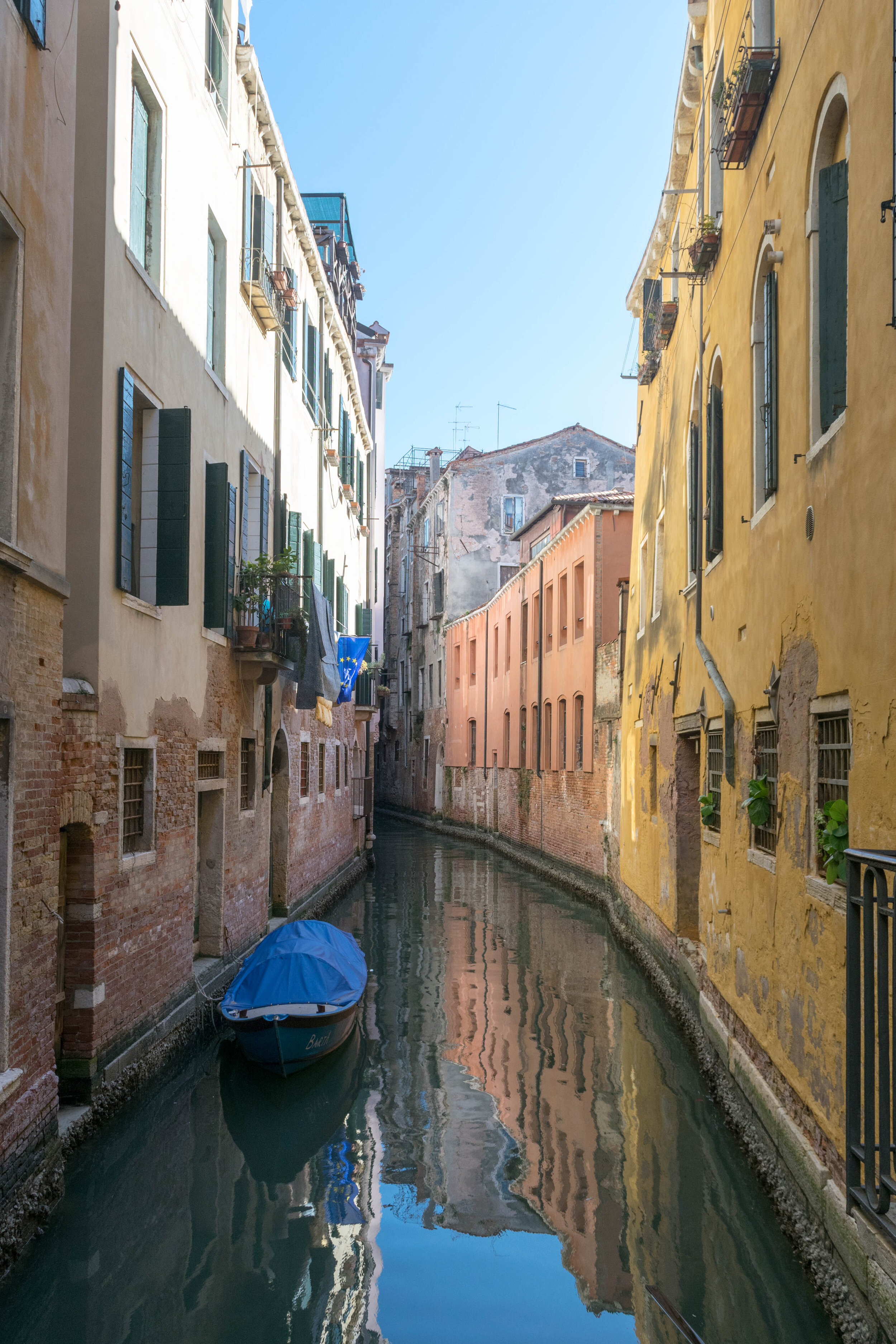5 Top Tips to Ensure You Don’t Hate Venice
This is a 3-part series on Venice. Read also about 8 Must-Visit Places in Venice and How to Spend a Day Exploring the Islands Surrounding Venice.
Last updated: 13 October 2021
Venezia seems to be one of those bucket list destinations where people either love it or they hate it. I’ve now been to Venice twice so I feel that I have some newfound experience to share. The first time I visited Venice, I hated it. The second time, I loved it. In this post, we’ll offer you five of our top tips for optimising your visit to the Floating City.
1. Consider the Time of Year
I 100% believe that the time of year you choose to visit Venice is absolutely crucial to determining whether you love or hate Venice. Some elements that need to be taken into account include: weather, temperature, possible flooding, and whether cruise ships will be docking.
I first visited around the middle of September 2015. It was scorching hot, the main square, Piazza San Marco (St Mark’s Square), was flooded (giving off a gross stench), and there were throngs and throngs of tourists! Needless to say, I did not have a good first impression of Venice.
But trust me, it can be so different! This time, we visited at the end of March. While there was still the possibility of acqua alta (flooding, or literally ‘high water’), we knew that the temperatures would be much cooler and that the weather should be at least half decent. And boy, did it make a difference.
When it comes to the weather and temperature in Venice, early spring can of course still be a bit unpredictable, but nobody’s going to Venice for a beach holiday! Cooler temperatures are more ideal when you’re doing a lot of walking anyway. While we were there, it would get quite warm under the direct sun in the middle of the day, and significantly cooler in the shade as well as the mornings and evenings, so layering was essential.
Venice’s high water season is typically from September to March, though it seems that in recent years, the flooding has become more unpredictable and can happen at any time of year. Even if Venice was flooded when we visited, at least it wouldn’t have been so hot that the whole city stunk.
If you’ve never seen a cruise ship coming in to Venice, you should look it up. It is a jaw-dropping sight - and not in a good way! The enormous sizes of cruise ships these days absolutely dwarfs the wee flat city that is Venice - they just don’t belong there in our opinion. And when a cruise ship docks, thousands of tourists will be spit out onto Venice for a day trip. It’s advisable to look up what days cruise ships are due to dock in Venice so that you can avoid them.
2. Spend At Least Three Full Days
Some people say that one day is enough to see Venice while others say that five days isn’t enough. It’s all a matter of what you’re looking for and interested in seeing, of course. There are many people who believe that because Venice is so small, you can see it in a day. Naturally, if you’re pressed for time and want to simply be able to say that you’ve been to Venice, it is possible to rush through and see all of the main attractions in a day.
However, to get a better experience of Venice, we recommend spending at least three full days. We found three days to be optimum for exploring Venice as well as its surrounding islands without feeling rushed.
3. Be An Early Riser
Despite visiting in March, which is technically not high season yet, we still saw tons of tourists. This is one of the big drawbacks if you decide to visit Venice only for the day or one night. You end up trapped with all of the other day-trippers and one-nighters and anywhere you go is crowded with people.
We know that holidays are generally for relaxing and who wants to wake up so early in the morning when you don’t have to go to work, but in such a tourist-driven city like Venice, it’ll be so worth it!
On our first morning (second day), we woke up before the crack of dawn to walk over to Piazza San Marco - or just around the corner from it to where Doge’s Palace is - to watch the sunrise, and it was just stunning.
You can also take advantage of visiting the main attractions that don’t have opening hours (such as Rialto Bridge) at this time. As well, wandering along the narrow streets and hopping over the wee bridges when there’s no one else around offers a different ambience.
And as everything operates by boat in Venice, you can observe how the locals start their day if you’re up with them. We watched boats pass by carrying fruits & vegetables, seafood, cardboard boxes, and construction equipment, and we even saw a rubbish boat collecting rubbish!
If you’re keen to visit the surrounding islands, you can also hop on one of the first water buses heading there to experience the islands in a more peaceful setting.
4. Gondola Ride Alternatives
A gondola ride along the Venetian canals is certainly a bucket list item for most people when visiting Venice, but it comes at a steep price. The fares are set by the city, so are non-negotiable. At the moment, the fare is €80 for 30 minutes, and after 19.00, this increases to €100 for 30 minutes. Additional time is €40 for every 20 minutes or €50 after 19.00. Do note that the fares are per gondola, not per person, so if you are travelling with a group of friends or are willing to share with strangers, the cost can go down.
If you’re not willing to shell out the money for a romantic gondola ride, or you’re on a tight budget, there are a few alternatives to experiencing life on the water.
You can ride the vaporetto, or water bus, where many of the 19 routes go along the Grand Canal. If you go early enough (the early rising tip will always come in handy in Venice!) or get on at the beginning of a route, get the outside seats at the back of the boat for optimum views.
The cost is €7.50 for a one-way adult ticket, valid for 75 minutes, which in all fairness is really expensive in itself, but it’s still cheaper than a gondola ride!
The other alternative is to ride across the Grand Canal the way the locals do, which is via the traghetto (literally translated as ‘ferry’). Instead of going along the Grand Canal, the traghetto takes you from one side of the canal to the other. You would be riding in a gondola though, albeit a less luxurious-looking one, but a gondola nonetheless!
The cost is €2 per ride for tourists (vs €0.70 per ride for locals). Obviously, this is the most budget-friendly option and ideal if you simply want to experience a ride in a gondola!
5. Where to Stay
Like many things associated with Venice, there are varying opinions on whether you should stay on the island of Venice or off it on a neighbouring island like Lido. After a lot of research and deliberation, we decided that staying in Venice would be the best choice.
We didn’t want to waste precious time commuting to and from Venice each day and also be at the mercy of the water bus timetable. We wanted to be able to easily be in the thick of our exploring as early as possible and even be able to pop ‘home’ for a break if we felt tired.
And it is possible to stay in Venice and be away from the crowds! We booked an apartment called San Polo Feel the Center, which is pretty much smack dab in the middle of Venice yet is in a very quiet area. The apartment is owned by a local Venetian who is incredibly nice and even met us at the bus station to walk with us to the apartment so we wouldn’t get lost!
When choosing your accommodation, be sure that it is not on the ground floor! As Venice is susceptible to flooding, a ground-floor room or apartment might be flooded as well, and can feel damp.
The last thing to consider when choosing where to stay is the convenience and associated cost of getting to and from the airport or bus/train station. While some accommodation options may be a lot cheaper than others, don’t forget to take a look at how long it takes to get there and what mode of transportation is required.
One of the reasons we chose our apartment was because we could take the bus from the airport to the bus station in 20 minutes and then walk 15-20 minutes to the apartment, with the bus tickets costing €26 round-trip for the both of us. If we’d have had to take a water bus to and from the airport, it would’ve cost us €50 round-trip for both of us, as well as a longer amount of time.
If you’re planning your own visit to Venice or are considering a trip in the future, hopefully this list provides you with some insight to help you make some important decisions! Have you been to Venice before? Or do you want to? What tips did you like best? Let us know in the comments!
You might also like…
Have you checked out our YouTube channel?
We made a few travel vlogs featuring Venice over on our YouTube channel! Be sure to check them out and subscribe to our newsletter and YouTube channel if you haven’t done so already!














Follow along as we visit the islands of Murano, Burano, and Torcello during our visit to Venice!